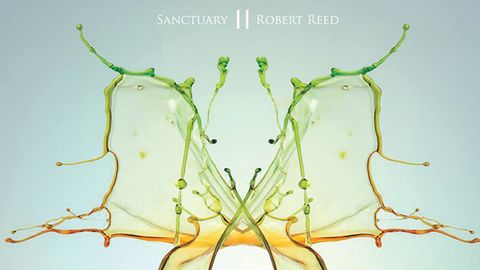Sanctuary II begins with high keyboard drones and Les Penning’s recorder evoking wide-open skies, just as he did at the beginning of Oldfield’s Hergest Ridge. This segues into another instrumental section which culminates in lead guitar with that unique, slightly whinnying sound that makes one think that this time, surely that’s got to be Oldfield guesting, playing his old Gibson SG through the original amp set-up. But of course it isn’t; it’s Reed.
Both slightly droll and full of love for the original material.
Anyone who knows Mike Oldfield’s music from the 70s will find themselves spotting specific guitar and bass figures that have been reshaped in a way that sounds both slightly droll and full of love for the original material.
Into the 80s, many 70s artists wanted to move on both stylistically and sonically, with developments in technology changing the sound and feel of their music. And some - Oldfield too, to an extent - lost a degree of soul in their desire or obligation to use the glossier sound of the technology du jour. But the atmosphere that Oldfield conjured up on his first three albums had a particular bittersweet quality, from the eternal sunny day by the sea that is Tubular Bells to the more melancholic autumnal flavours of Hergest Ridge and Ommadawn.
Rather than just borrow musical ideas, Reed wants to reopen that particularly rich 70s musical seam, and to get as close to Oldfield’s soundworld as possible he has invited along his old producer Tom Newman and Virgin Records’ mastering engineer Simon Heyworth. Simon Phillips, veteran of Oldfield’s late albums, plays drums and percussion. It’s even split into two 20-minute ‘sides’.
Once one stops mentally playing ‘spot the section’ – which is quite difficult – Reed has produced enough new material in the ‘olden style’ to make up a fine piece in its own right. There are, though, some points where it gets a bit bathetic. One particularly feisty instrumental section suddenly drops down to hand drums and female vocals singing phonetics in a faux Celtic-cum-Eastern European style, in a rather clunky pastiche of Ommadawn. That vocal style sounds clichéd now, having been done to death on newer pieces like Karl Jenkins’ Adiemus. Then Reed’s vocodered vocal comes in. Just because Oldfield sang through one on Crises doesn’t mean it was a good idea.
Side two – we might as well call it that – features a typical recorder-led hornpipe, but the instrumental sections are adventurously structured, giving a more satisfactory balance of homage and originality.


